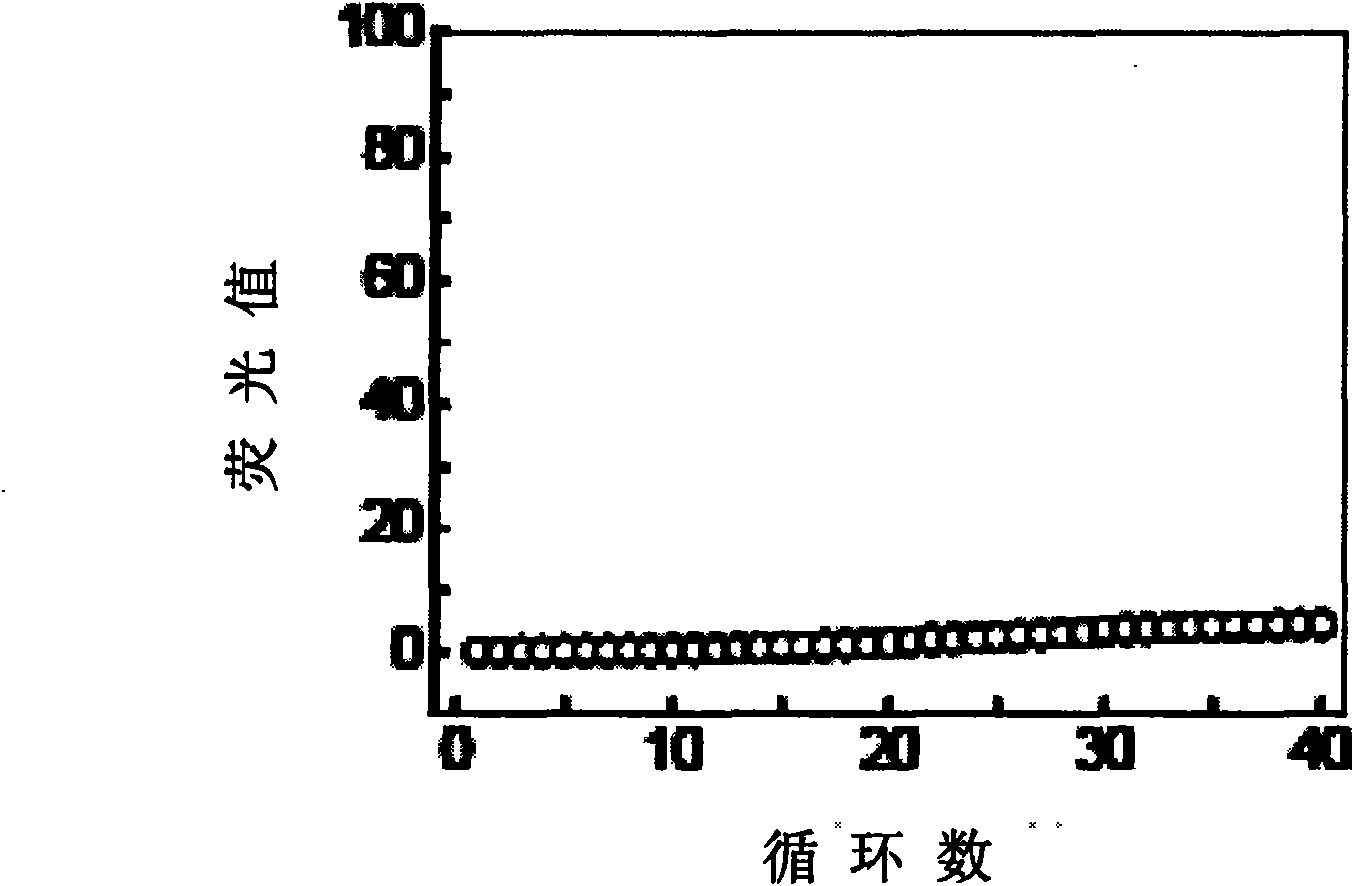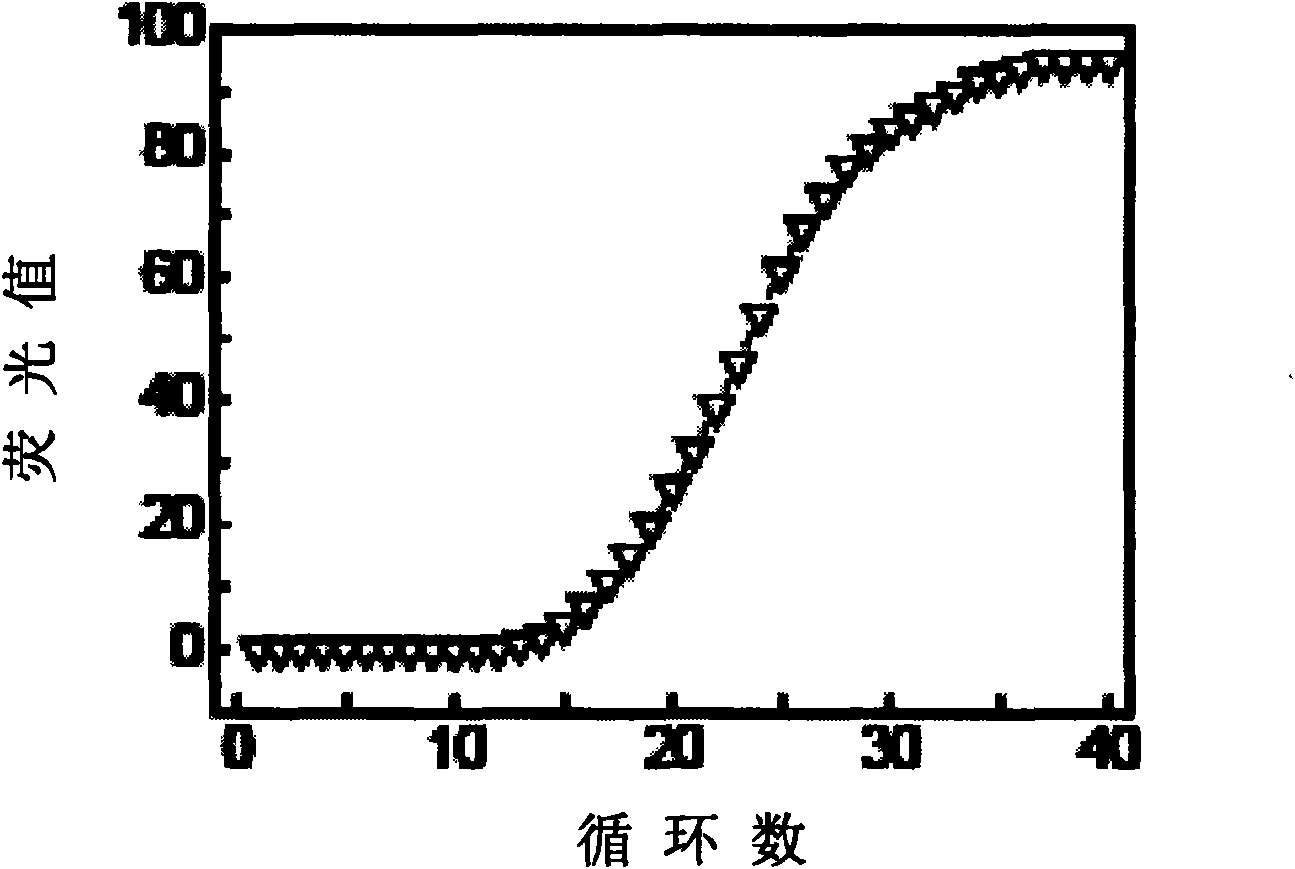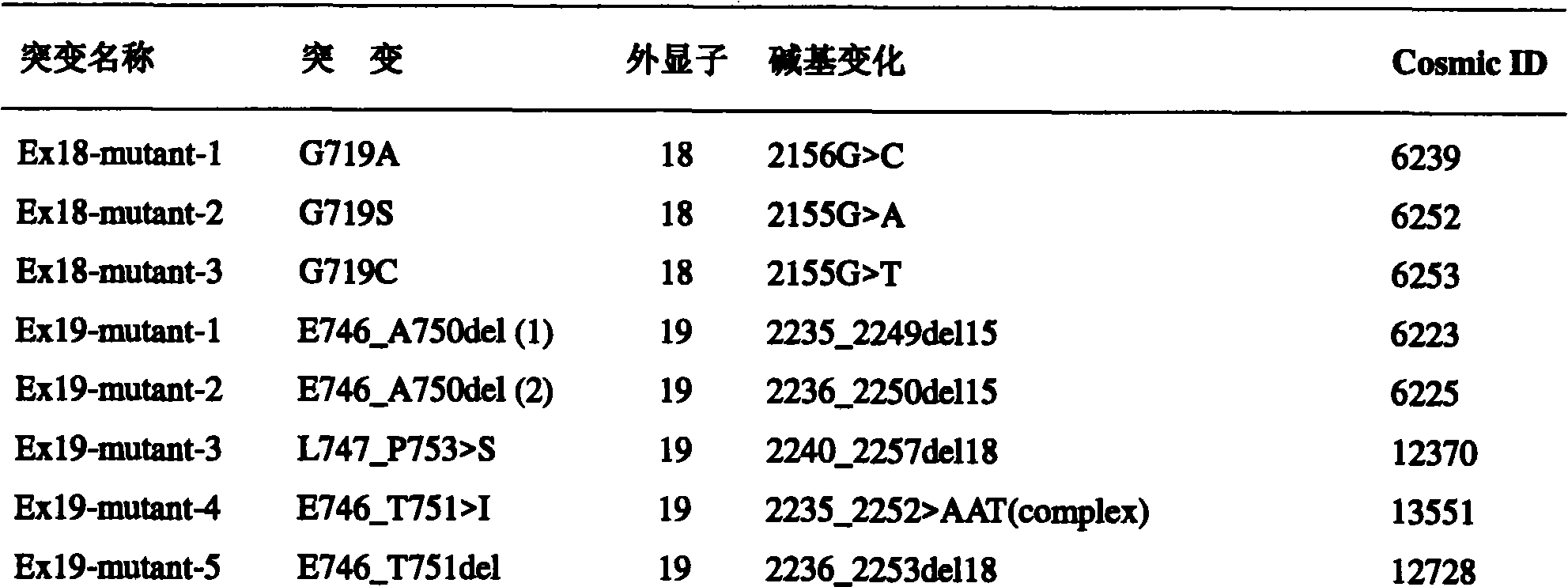Primers and probes for detecting human EGFR gene mutations as well as use method thereof
A probe, a human technology, applied in biochemical equipment and methods, microbial measurement/inspection, DNA/RNA fragments, etc., can solve problems that cannot meet the needs of non-invasive mutation detection, and achieve fast detection speed and selectivity Strong, highly sensitive effects
- Summary
- Abstract
- Description
- Claims
- Application Information
AI Technical Summary
Problems solved by technology
Method used
Image
Examples
Embodiment 1
[0058] In this example, the E746_A750del (2235_2249del15) mutation on exon 19 of the EGFR gene hotspot mutation is taken as an example to analyze the method for detecting 19 deletion mutations of the EGFR gene by single-tube fluorescent PCR of the present invention. Four cell lines were used in the experiment, H1650 (with E746_A750del mutation), H460 (EGFR gene wild type), 293T (EGFR gene wild type), SW480 (EGFR gene wild type); 100 whole blood samples from healthy unpaid blood donors , 62 clinical lung cancer samples (including fresh tissue, paraffin section, pleural effusion, whole blood).
[0059] The method for detecting the E746_A750del (2235_2249del15) mutation on exon 19 of the EGFR gene hotspot mutation using the above-mentioned fluorescent PCR comprises the following steps:
[0060] (1) Sample processing and template extraction quality control:
[0061] The scope of application of samples includes surgically removed fresh pathological tissues, formaldehyde-fixed para...
Embodiment 2
[0093] In this example, the L747_P753>S(2240_2257del18) mutation on exon 19 of the EGFR gene hotspot mutation is taken as an example to analyze the method for detecting 19 deletion mutations of the EGFR gene by single-tube fluorescent PCR of the present invention. One plasmid template strain (including L747_P753>S mutation) was used in the experiment, three cell lines were H460 (EGFR gene wild type), 293T (EGFR gene wild type), SW480 (EGFR gene wild type); 100 healthy free Whole blood samples from blood donors, 62 clinical lung cancer samples (including fresh tissue, paraffin sections, pleural effusion, whole blood).
[0094] The method for detecting the L747_P753>S (2240_2257del18) mutation on exon 19 of the EGFR gene hotspot mutation by using the above fluorescent PCR includes the following steps:
[0095] (1) Sample processing and template extraction quality control:
[0096] The scope of application of samples includes surgically removed fresh pathological tissues, formal...
Embodiment 3
[0119] In this example, the E746_T751del (2236_2253del18) mutation on exon 19 of the EGFR gene hotspot mutation is taken as an example to analyze the method for detecting 19 deletion mutations of the EGFR gene by single-tube fluorescent PCR of the present invention. One plasmid template strain (including E746_T751del mutation) was used for the experiment, three cell lines were H460 (EGFR gene wild type), 293T (EGFR gene wild type), SW480 (EGFR gene wild type); 100 healthy voluntary blood donors Whole blood samples, 62 clinical lung cancer samples (including fresh tissue, paraffin sections, pleural effusion, whole blood).
[0120] The method for detecting the L747_P753>S (2240_2257del18) mutation on exon 19 of the EGFR gene hotspot mutation by using the above fluorescent PCR includes the following steps:
[0121] (1) Sample processing and template extraction quality control:
[0122] The scope of application of samples includes surgically removed fresh pathological tissues, fo...
PUM
 Login to View More
Login to View More Abstract
Description
Claims
Application Information
 Login to View More
Login to View More - R&D
- Intellectual Property
- Life Sciences
- Materials
- Tech Scout
- Unparalleled Data Quality
- Higher Quality Content
- 60% Fewer Hallucinations
Browse by: Latest US Patents, China's latest patents, Technical Efficacy Thesaurus, Application Domain, Technology Topic, Popular Technical Reports.
© 2025 PatSnap. All rights reserved.Legal|Privacy policy|Modern Slavery Act Transparency Statement|Sitemap|About US| Contact US: help@patsnap.com



